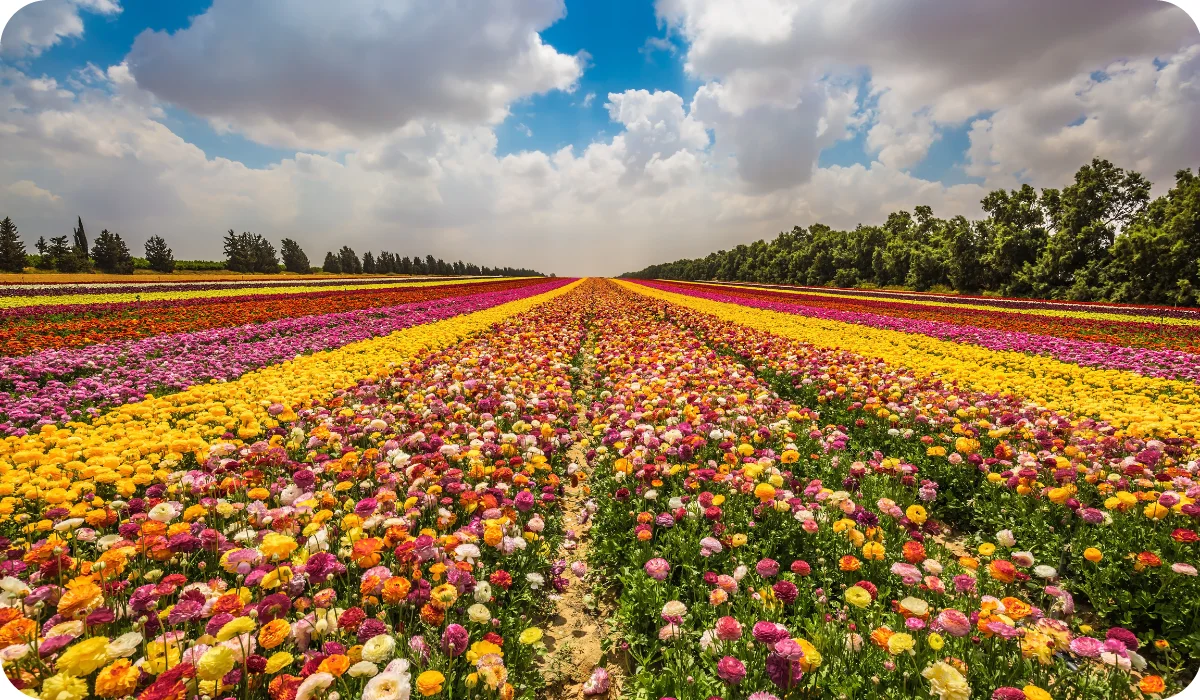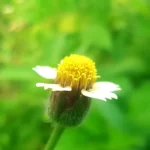Ranunculus – An Introduction
Do you want to bring a burst of vibrant colors to your garden? Are you fascinated by the delicate beauty of flowers? Look no further than Ranunculus, a stunning flower known for its vibrant hues and intricate petals.
In this comprehensive guide, we will explore everything you need to know about growing and caring for Ranunculus in the Indian context. Let’s embark on a journey filled with in-depth knowledge, practical tips, and expert insights.
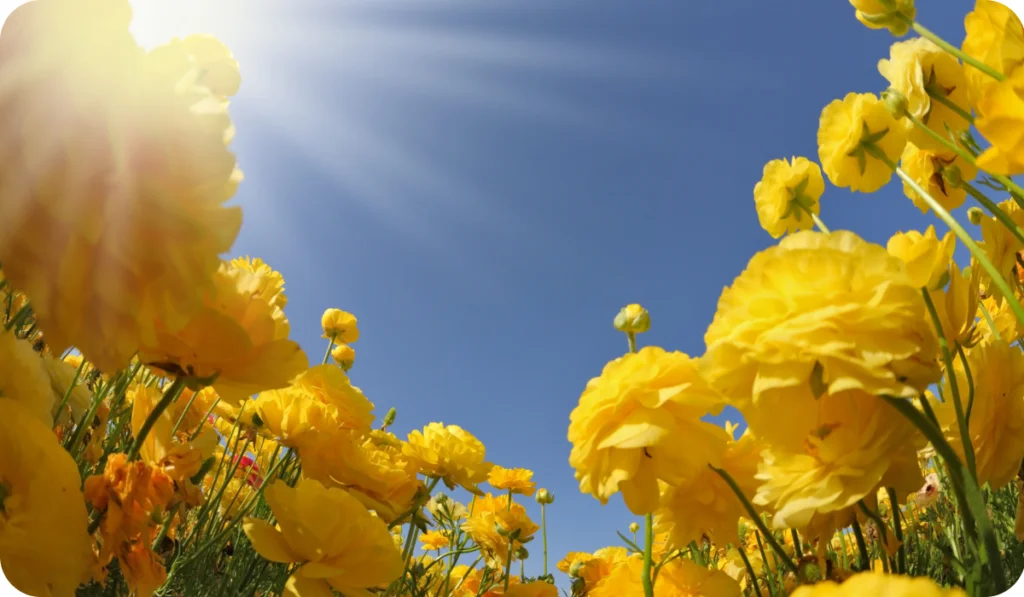
Overview of Ranunculus Flowers (Persian Buttercup)
Ranunculus, belonging to the Ranunculaceae family, encompasses a diverse range of flowers known for their striking appearance and remarkable variety. These beautiful blooms are native to regions across Asia, Europe, and North America.
With their vibrant colors, intricate petal structures, and lush foliage, Ranunculus flowers add a touch of elegance to any garden or floral arrangement.
Their popularity stems from their resemblances to delicate roses and peonies, making them a sought-after choice for flower enthusiasts and professional florists alike.
Historical Significance of Ranunculus
Throughout history, Ranunculus flowers have held significant cultural and symbolic meanings. In ancient mythology, they were associated with various gods and goddesses, symbolizing beauty, love, and charm. From traditional folklore to modern-day celebrations, Ranunculus has remained a beloved flower, capturing the hearts of people across different cultures and generations.
Cultural Associations and Symbolism
Ranunculus flowers carry diverse cultural associations and symbolism. In Indian culture, these blooms are often revered for their beauty and are considered auspicious, making them a popular choice for religious ceremonies, weddings, and festive decorations.
The different colors of Ranunculus also hold unique meanings, with red representing love and passion, yellow symbolizing friendship and happiness, and white conveying purity and innocence.
Ranunculus Varieties and Colors
When it comes to Ranunculus, you’ll find a wide array of captivating varieties and a vibrant spectrum of colors to choose from. Let’s delve into the fascinating world of Ranunculus varieties and colors.
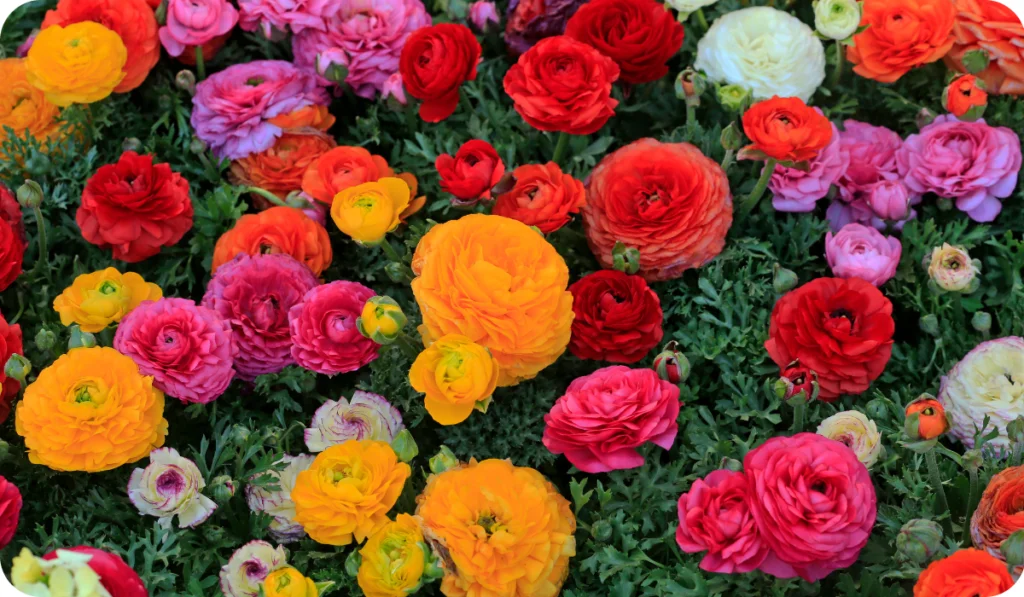
Popular Varieties of Ranunculus
Ranunculus offers an extensive selection of popular varieties, each possessing its own distinctive characteristics. Some notable varieties include the romantic and frilly Cloni Ranunculus, the ruffled and elegant Bloomingdale Ranunculus, and the bold and vibrant Purple Heart Ranunculus.
Types of Ranunculus in India
In India, there are various species of ranunculus, including native wildflowers and cultivated varieties bred for their beautiful blossoms. Let’s explore some of the common types found in the country.
Ranunculus carolinianus: Also known as Carolina buttercup, this native species is a winter annual or short-lived perennial. It can be found in low woods and damp thickets in India.
Ranunculus flammula: Lesser spearwort or sagebrush buttercup, this native ranunculus produces small, solitary yellow flowers with five petals. It thrives along lakeshores, pond margins, and other shallow water areas.
Ranunculus repens: Creeping buttercup is a weedy perennial that grows around 8-12 inches tall but can spread up to 36 inches wide. Although native to Europe and Asia, it has naturalized in temperate regions across India.
Ranunculus asiaticus: This tuberous-rooted plant has parsley-like leaves and blooms from late spring to early summer. Often referred to as Persian buttercup, it bears cup-shaped, poppy-like flowers in various colors including red, pink, purple, yellow, and white.
The flowers have distinctive purple-black anthers and typically grow on stems ranging from 12 to 24 inches tall.
Hybrid Ranunculus asiaticus: Florists often sell ranunculus flowers that are hybrids, and tuberous corms of these hybrids are available for home gardening. These hybrids are bred to have specific qualities such as stem length, size, color, and the number of petals on each bloom.
Here are some popular hybrid varieties commonly found in India:
Ranunculus asiaticus x Cloni Success ‘Venere’: These ranunculus feature hot pink ruffled blooms with thick and sturdy stems, making them perfect for cutting.
Ranunculus asiaticus x ‘Elegance Giallo’: This variety displays sharp yellow flowers and is known for its long-lasting cut flowers.
Ranunculus asiaticus x Amandine ‘Salmon’: With warm salmon-colored blooms ranging from light orange to pink, this variety adds a touch of warmth to any garden.
Ranunculus asiaticus x La Belle ‘White Picotee’: These flowers have cream-colored petals edged in violet and pink, creating an elegant and delicate appearance.
Ranunculus asiaticus x Pon-Pon ‘Hermione’: These ranunculus boast huge flowers with ruffled pink and white petals. As the flowers fully open, a green center eye is revealed, adding a unique touch to the blooms.
These ranunculus varieties can be a delightful addition to gardens in India, offering vibrant colors and captivating forms. Whether you choose native species or hybrid cultivars, ranunculus can bring beauty and charm to your garden.
Exploring Different Colors and Petal Patterns
Ranunculus flowers showcase an impressive range of colors, from vibrant shades of red, orange, and pink to delicate hues of white, yellow, and pastels. Each color variation evokes a unique ambiance and complements different garden themes.
Whether you’re seeking a romantic and soft ambiance or a bold and eye-catching display, Ranunculus offers an array of options to bring your vision to life.
Choosing the Right Ranunculus for Your Garden
When selecting Ranunculus bulbs for your garden, consider factors such as bloom size, stem length, and plant height. Some varieties are better suited for borders and bedding, while others thrive in containers and floral arrangements. By understanding the specific characteristics of different Ranunculus varieties, you can curate a diverse and captivating garden display.
Growing Ranunculus Bulbs
To successfully cultivate Ranunculus in your Indian garden, proper preparation and planting techniques are crucial. Let’s explore the essential steps involved in growing Ranunculus bulbs.
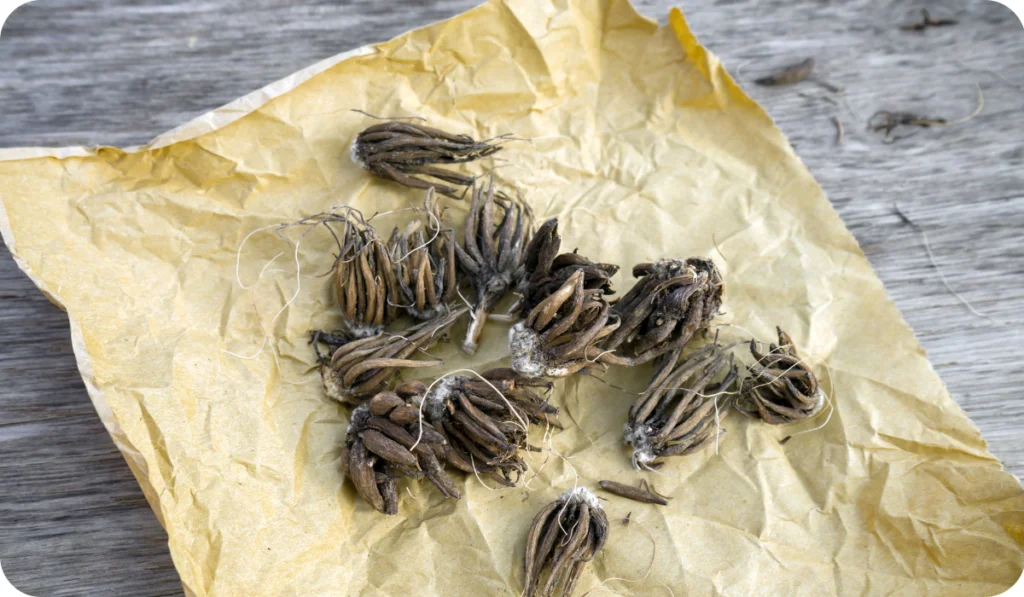
Selecting and Preparing the Planting Site
Before planting Ranunculus bulbs, carefully choose a site that receives ample sunlight and has well-draining soil. Rancunculus thrives in full sun, so select a location that receives at least 6-8 hours of direct sunlight per day.
Additionally, ensure that the soil is well-draining to prevent waterlogged conditions, as excessive moisture can lead to bulb rot.
Soil Preparation and Amendments
Prepare the soil by removing any weeds or debris and loosen it to allow for proper root growth. If the soil is heavy clay or lacks organic matter, consider adding well-rotted compost or aged manure to improve its texture and fertility. This will enhance the drainage capabilities and provide essential nutrients for healthy Ranunculus growth.
Planting Techniques and Depth
When planting Ranunculus bulbs, ensure that the pointy ends, known as “claws,” are facing downwards. Dig holes with a depth of about 2-3 inches, spacing them approximately 4-6 inches apart. Gently place the bulbs in the holes and cover them with soil, pressing lightly to secure them in place.
Watering and Drainage Considerations
Proper watering is crucial for the successful establishment and growth of Ranunculus bulbs. After planting, give the bulbs a thorough watering to settle them in the soil.
Subsequently, maintain a consistent moisture level by watering them regularly, ensuring the soil remains slightly moist but not waterlogged. Adequate drainage is essential, as excess moisture can lead to bulb rot.
Care and Maintenance of Ranunculus
To ensure healthy growth and vibrant blooms, Ranunculus plants require proper care and maintenance. Let’s explore the key aspects of caring for these delightful flowers in your Indian garden.
Sunlight and Temperature Requirements
Ranunculus thrives in full sun, making it crucial to provide them with ample sunlight. Ensure that they receive at least 6-8 hours of direct sunlight daily. In terms of temperature, Ranunculus prefers cooler conditions, with ideal growing temperatures ranging between 15-20°C (59-68°F).
Protect the plants from extreme heat by providing shade during the hottest parts of the day, especially in regions with scorching summers.
Proper Watering and Irrigation
Maintaining proper moisture levels is essential for healthy Ranunculus growth. Water the plants deeply, ensuring that the soil is thoroughly moistened but not saturated. Avoid overwatering, as excessive moisture can lead to bulb rot. Monitor the soil moisture regularly and adjust the watering frequency based on weather conditions, ensuring that the soil remains slightly moist.
Fertilizing Ranunculus Plants
To promote robust growth and abundant blooms, fertilize your Ranunculus plants regularly. Before planting, incorporate a slow-release balanced fertilizer into the soil. Additionally, provide monthly applications of a balanced water-soluble fertilizer during the growing season.
Managing Pests and Diseases
Ranunculus plants are generally resilient to pests and diseases. However, certain common garden pests, such as aphids and snails, may occasionally feed on the foliage. Monitor your plants regularly and take appropriate measures to control these pests, such as using organic insecticides or employing physical barriers like copper tape to deter snails.
Extending the Blooming Season
With proper care and strategic techniques, you can extend the blooming season of your Ranunculus plants. Here are some methods to maximize the bloom time and enjoy their stunning flowers for longer.
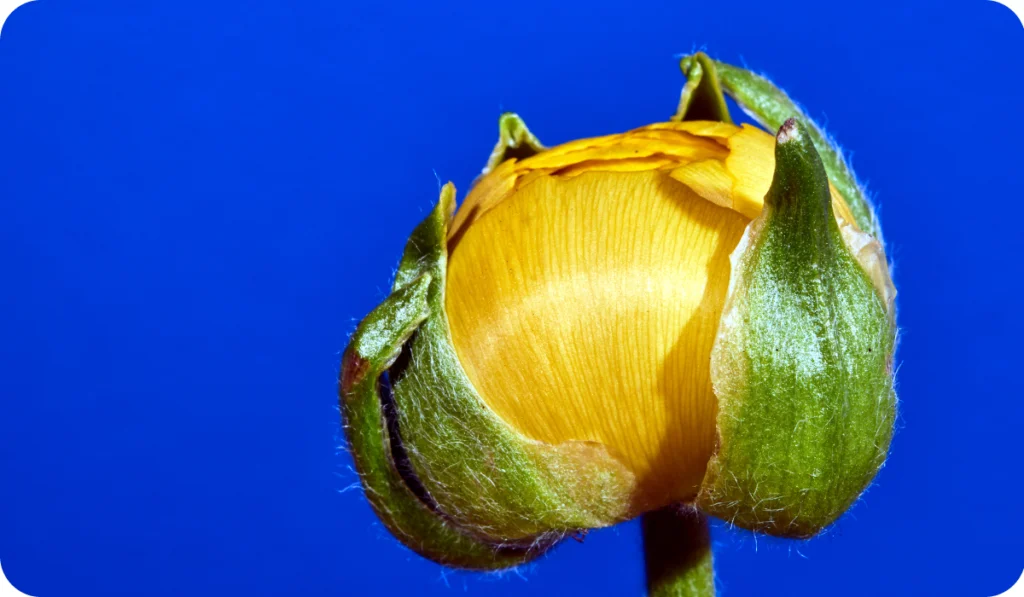
Deadheading and Pruning Techniques
Regular deadheading is crucial to encourage continuous blooming and prevent the plants from diverting energy into seed production. Remove faded flowers by cutting the stems just above a healthy leaf. This practice promotes the growth of new buds and extends the overall blooming period.
Supporting and Staking Ranunculus Stems
As Ranunculus plants grow taller and produce more blooms, providing support becomes essential to prevent bending or breaking of the stems. Install stakes or plant supports near the base of the stems and gently tie them to provide stability. This ensures that the flowers remain upright and enhances their visual appeal in the garden or floral arrangements.
Applying Mulch for Temperature Regulation
Mulching around the base of Ranunculus plants can help regulate soil temperature and moisture levels. Apply a layer of organic mulch, such as straw or shredded bark, around the plants. Mulch helps to retain moisture, suppresses weed growth, and insulates the soil, providing a more favorable environment for healthy Ranunculus growth.
Controlling Flowering Period through Manipulation
If you wish to manipulate the flowering period of your Ranunculus, you can control the timing of planting and adjust environmental conditions. By staggering the planting dates or utilizing protective structures like cold frames or tunnels, you can extend or advance the blooming season to align with your desired timeframe.
Ranunculus in Floral Arrangements
Ranunculus flowers are highly sought-after for their exquisite beauty and make a stunning addition to floral arrangements. Here are some key considerations when using Ranunculus in your floral designs.
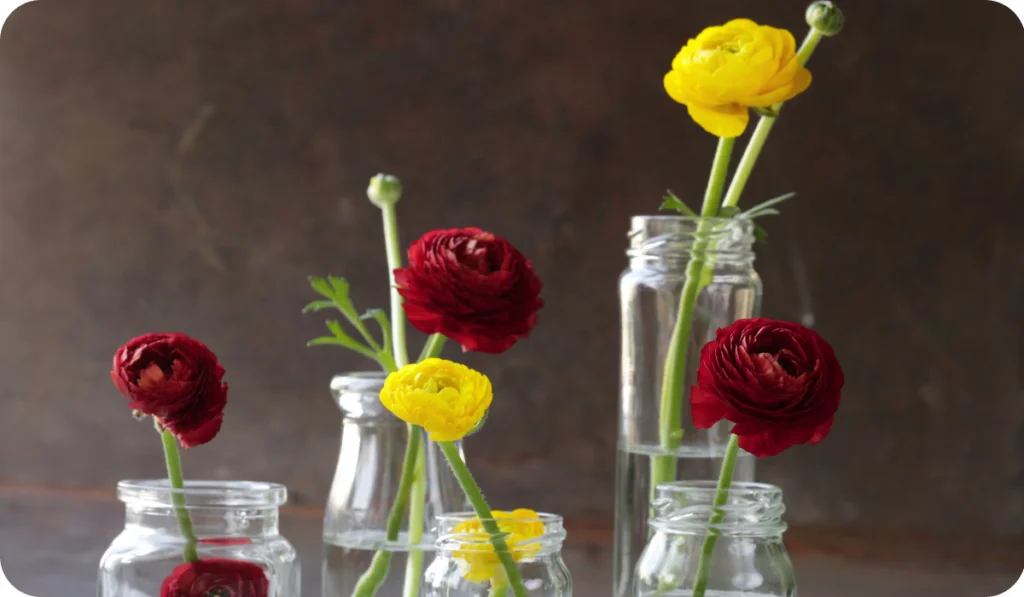
Suitable Complementary Flowers
When creating floral arrangements with Ranunculus, consider combining them with complementary flowers to enhance their visual impact. Flowers like tulips, roses, anemones, and peonies make excellent pairings, adding depth, texture, and contrasting colors to the arrangements.
Design Tips for Creating Stunning Bouquets
To create visually striking bouquets with Ranunculus, consider incorporating different sizes and colors of Ranunculus blooms. Combine large, fully open flowers with smaller, partially open buds for an appealing contrast. Experiment with various color combinations to create captivating and harmonious arrangements.
Ranunculus Centerpiece Ideas
Ranunculus flowers can take center stage in stunning floral centerpieces. Create eye-catching arrangements by placing Ranunculus blooms in a focal point, surrounded by complementary foliage and accent flowers. Consider incorporating elements like candles, vases, or decorative containers to add an extra touch of elegance to your centerpiece designs.
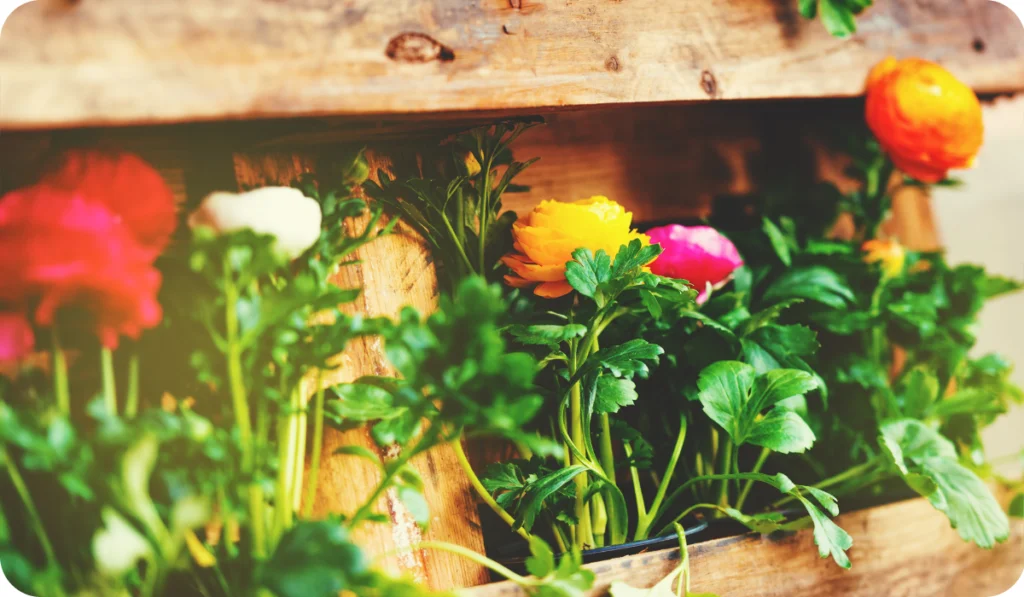
Care Tips for Cut Ranunculus Flowers
To ensure the longevity of cut Ranunculus flowers, follow these care tips:
- Cut the stems at a 45-degree angle under running water to promote better water uptake.
- Remove any foliage that would be submerged in water to prevent bacterial growth.
- Place the cut flowers in a clean vase filled with fresh water and floral preservative.
- Change the water every two days and trim the stems slightly to maintain their freshness.
- Display the vase in a cool area away from direct sunlight, drafts, or ripening fruits.
Ranunculus Symbolism and Cultural Significance
Ranunculus flowers hold rich symbolism and cultural significance across various traditions and celebrations. Let’s delve into the profound meanings and associations associated with these enchanting blooms.
Symbolic Meanings and Interpretations
Ranunculus flowers are often associated with beauty, charm, and radiant energy. They symbolize love, admiration, and passion, making them an ideal choice for expressing affection or celebrating special occasions.
Ranunculus in Traditional Ceremonies and Festivals
In Indian culture, Ranunculus flowers hold significance in traditional ceremonies, weddings, and festivals. Their vibrant colors and captivating appearance make them a popular choice for garlands, floral decorations, and religious rituals, symbolizing joy, auspiciousness, and devotion.
Significance in Art, Literature, and Culture
Ranunculus flowers have inspired artists, writers, and poets for centuries. Their delicate petals and vibrant colors have been depicted in paintings, sculptures, and literature, symbolizing beauty, grace, and the ephemeral nature of life.
Ranunculus blooms have also been featured prominently in various cultural festivals, representing renewal, abundance, and the arrival of spring.
Conclusion
Growing and caring for Ranunculus in your Indian garden is a rewarding experience that brings forth an explosion of colors and beauty. By following the practical tips and expert insights provided in this comprehensive guide, you can create a vibrant Ranunculus display that will captivate your senses and leave a lasting impression.
Embrace the elegance and charm of Ranunculus flowers, and let your garden bloom with their exquisite petals. Whether you’re a seasoned gardener or a passionate flower enthusiast, the journey of cultivating Ranunculus in India is filled with joy, inspiration, and the wonders of nature.
About our Web Store www.shehrikisaan.com
For a wide selection of fertilizers and soil amendments suitable for all these plants, we invite you to explore our esteemed webstore at www.shehrikisaan.com. Our webstore offers a comprehensive range of products designed to enhance the growth and vitality of your plants.
Whether you’re seeking specialized fertilizers, organic amendments, or premium-quality soil enhancers, our webstore is your one-stop destination. With our commitment to providing garden enthusiasts with top-notch products, you can trust us to cater to your gardening needs effectively. Visit www.shehrikisaan.com today and unlock the secret to flourishing plants.
Discover our Social Media Presence and web store. Choose your favourite platforms:
🌐 Google Business Link: https://goo.gl/maps/wgs6yU8mArXRfHdi9
🎥 YouTube: https://www.youtube.com/@shehrikisaan
💼 LinkedIn: https://www.linkedin.com/company/shehrikisaan/
📌 Pinterest: https://in.pinterest.com/ShehriKisaan/
📘 Facebook: https://www.facebook.com/ShehriKisaan/
📷 Instagram: https://www.instagram.com/shehrikisaan_gn/
🐦 Twitter: https://twitter.com/Shehri_Kisaan
🛒 Product Web Store: www.shehrikisaan.com
📚 Check out our other articles, education materials, blogs, and write-ups too: www.shehrikisaan.in


